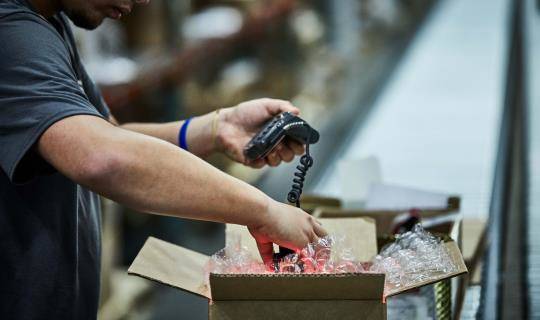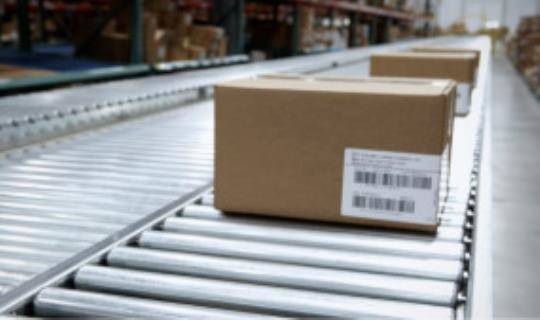ICS: Partnering for Packaging
By World Courier
So why are many manufacturers losing dollars, time and opportunities by following traditional processes for product relabeling, repackaging and kitting? How can extra touch points be removed to minimize risk in the pharmaceutical supply chain and get critical therapies to patients faster and more efficiently? What does that process—and the right partner—look like? Wrapping up packaging processes may be neater than many people think.
The regulatory landscape and challenges
As with any aspect of pharmaceutical distribution and safety, the U.S. Food and Drug Administration (FDA) has stringent guidelines governing what can and cannot be done to drug packaging. In fact, in the FDA’s eyes, the term “prescription drug labeling information” can be a blanket term for prescribing information, package insert, direction insert, package circular or professional labeling. The primary purpose of this drug information is to give healthcare professionals the information they need to prescribe drugs appropriately.
While products certainly leave a manufacturer’s facility meeting FDA regulations, a number of issues can arise before that drug is actually distributed that create new compliance challenges for manufacturers. For example, what happens if product artwork or an insert changes or a new warning label or expiration date is required? In order to comply in the past, a manufacturer would often have to retrieve product inventory back from a distributor and ship it to a vendor that was licensed to make packaging changes. Once there, the products would be placed in line behind others for those changes to take place, and then packed up a third time and shipped back to the distributor. That created a number of instances for product damage, not to mention inefficiencies in terms of cost and time.
The reality of loss
A drug manufacturer wants to focus on product results, not develop a core competency in supply chain management. When a product is being shipped back and forth, its time in circulation with providers and pharmacies is lost in addition to the lost dollars in shipping. Moreover, when that product is not available, the effect of the lost time—a shortage, even—can result in providers growing reluctant to prescribe it in the future.
A Third-party Logistics partner can provide FDA-certified:
- Relabeling
- Repackaging
- Kitting
- Inspections
A better model: The outsourcing process
A properly licensed third-party logistics partner (3PL) can prove value by removing the burden of managing the repackaging process from manufacturers. In these instances, 3PLs handle four elements of packaging a drug once it has left the manufacturer: repackaging, relabeling, kitting and inspection.
Relabeling
Relabeling is often the biggest component of the four areas examined here. Relabeling covers everything from printing a new label to changing artwork on a drug package, adding a warning or sticker to the package or changing the expiration date.
Repackaging
Repackaging mostly covers package inserts. If the FDA, for example, requires a specific insert or addition, a 3PL partner can print and package the insert in compliance with FDA guidelines. Other times, repackaging refers to how many pills or units are in each package. For example, a manufacturer might ship a drug in a case of 24, then the repackaging partner will break that case down into “selling units” of six or 12 for distribution.
Kitting
With kitting, ancillary items necessary for drug administration are included with the drug package. For example, if a drug requires saline solution, tubing or a needle kit, kitting means including those items together so the patient can easily administer the drug.
Inspections
3PL partners can perform two types of inspections. The first is for outsourced packaging and is a check that looks for both product damage and correct lot numbers and expiration dates, among other things. The other kind of inspection happens after a complaint against a manufacturer and is called “100 percent inspection,” where every single unit in a lot is inspected and checked against that complaint. Complaints can range from loose bottle tops to missing package inserts, and representatives of the manufacturer can be present during these inspections.
“They would open themselves up for a loss of product when they’re having to move that product multiple times…”
Benefits for manufacturers
Using a FDA-licensed 3PL to relabel, repackage, kit and inspect means two key benefits for manufacturers: savings and decreased risk to the product.
Removing a product from one facility, shipping it to another, getting in their queue for the product change, making the change and shipping it back to the distributor can take weeks, unless the manufacturer wants to pay a hefty expediting fee. But using a 3PL can mean as little as one day’s turnaround time.
Albert Cooksey, vice president for ICS, explains one common manufacturer situation:
“Most manufacturers we deal with, they produce their first lot of inventory and it may be all the inventory they have in their entire organization,” says Cooksey. “They package their product, and they send it to ICS. Once it gets to ICS, they realize, ‘Oh, we need to add this label or do a package insert.’ Do they want to open themselves up for a loss of product or create an inventory shortage situation by shipping product back and forth? Of course they don’t—and they don’t have to.”
Evaluating a 3PL
While partnering with a 3PL is a way to improve the repacking process and gain significant efficiencies, all partners are not created equally. Consider the following factors when looking at specific service provider offerings:
Licensure
Ensure that your 3PL partner has the required FDA certification to repackage, relabel, kit and inspect drugs. An FDA Establishment License means that a manufacturer, repacker or relabeler has registered with the FDA and listed all of their commercially marketed drug products. Though required for manufacturers, this requires rigorous inspection and is rare among 3PL providers. If a manufacturer is producing controlled substances, DEA licensure for the 3PL is also critical. Not working with a licensed provider can mean hefty fines at best—and product recalls with market backlash at worst.
Customization
Can your 3PL provider scale a solution to your needs? The best partners can offer everything from in-house printing and custom repackaging to dose packaging and repackaging in separate controlled facilities or temperature-controlled services.
Efficiencies
Saving the manufacturer time and money should be top-ofmind for any 3PL provider. To that end, look for a partner who can also distribute your product, mitigating the risk of damage and reducing transit time. Also consider a provider that can leverage best-in-class technology and best practices in supply chain optimization and packaging.
Product
A 3PL partner should be able to repackage, relabel, kit and inspect a product for any disease state—in any box, bottle or carton. That partner should be able to bring industry knowledge to inform how they approach your specific product as well, with specific protocols for how your product is stored, serviced and transported.
Questions to ask:
- Is the 3PL provider licensed?
- Is the solution customizable?
- Will I save time and money?
- What are my specific product needs?
What success looks like
As the leading 3PL provider for the pharmaceutical manufacturing industry, ICS has the required certification to relabel, repackage, kit and inspect, and we’ve helped a number of manufacturers streamline the repackaging process so they can focus on what matters most: product results.
We have been able to keep our customers’ products moving along the supply chain by partnering with them both to relabel and distribute drugs as the FDA approves package inserts. In one instance, a manufacturer was able to ship vials to ICS in advance of approval of certain packaging elements, then have ICS print and apply the FDA-approved packaging once the product arrived. The result was no lag time in distributing the products and generating revenue for the manufacturer.
In another example, ICS developed specialized labels for a frozen product that could not be allowed to thaw. Our teams worked diligently to develop a custom process for applying labels to the product inside a freezer, ensuring the products’ internal temperature never wavered from the ideal range.



